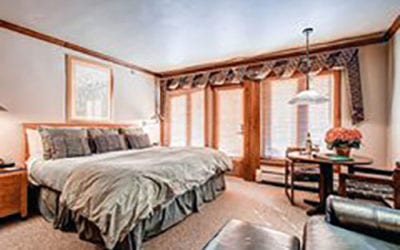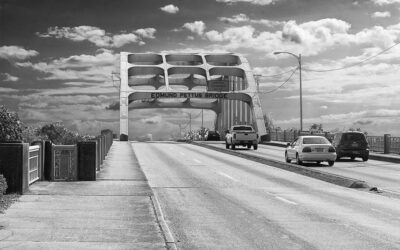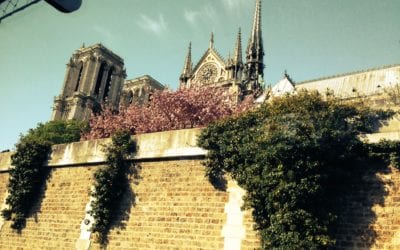 Mondays in Seville are quiet, not the day to plan for sightseeing. The Alcazar is closed, the market is basically shut down and many restaurants make Monday their day of rest. It seemed like a perfect day for Cordoba.
Mondays in Seville are quiet, not the day to plan for sightseeing. The Alcazar is closed, the market is basically shut down and many restaurants make Monday their day of rest. It seemed like a perfect day for Cordoba.
We did head to the market because timetables indicated it was open, however it was deserted. Speaking with the egg vendor and another vegetable stall owner the slow day was because of no fish. All said when there is no fish the market is dead. Guess there is another reason not to order fish on Mondays.
A taxi ride across town to the Santa Justa train station brought us to the car rental arranged by AutoEurope (800-223-5555). After waiting in line for around an hour we were on the road to Cordoba via Carmona. We came upon the huddled white houses of Carmona around 2 p.m., perfect for lunch in Spain.
 Michelin’s Red Guide recommended the Restaurant Almazara (Santa Anna 33, 95 4190076). Just outside of the historic center, this restaurant has been created in a restored mill with easy car parking (a luxury in modern Spain) was across the street. The restaurant offered a local traditional tasting menu for Euros 21. Three appetizers included an eggplant alboronia topped by a quail egg, sautéed spinach with garbanzo beans and a blended red pepper soup topped with diced dried ham. These were followed by a dish of fried fish – calamari, sardines, anchovies and fresh cod. Then they served wonderful medallions of steak filets stuffed with duck liver mousse. The dessert of Torta Inglesa and raspberry sherbet followed by locally made anis liquor finished the meal perfectly. It is an amazing and affordable experience.
Michelin’s Red Guide recommended the Restaurant Almazara (Santa Anna 33, 95 4190076). Just outside of the historic center, this restaurant has been created in a restored mill with easy car parking (a luxury in modern Spain) was across the street. The restaurant offered a local traditional tasting menu for Euros 21. Three appetizers included an eggplant alboronia topped by a quail egg, sautéed spinach with garbanzo beans and a blended red pepper soup topped with diced dried ham. These were followed by a dish of fried fish – calamari, sardines, anchovies and fresh cod. Then they served wonderful medallions of steak filets stuffed with duck liver mousse. The dessert of Torta Inglesa and raspberry sherbet followed by locally made anis liquor finished the meal perfectly. It is an amazing and affordable experience.
After coffees we continued to Cordoba about an hour to the east. My goal was to visit one of the few remaining major structures from the Moorish period, the storied Cordoba Mesquita. The highway brings drivers across the Guadalquivir River on a new bridge with the old Roman bridge upriver to the right. Parking is impossibly difficult. Honestly, I don’t have a good solution other than to park on the outskirts and call a taxi to bring you close to the tortured, narrow, pedestrian-only streets of the center.
After the all-too-tourist-trap walk through the whitewashed Arab streets of the Jewish Quarter and the non-stop chatter of American, German, French, Japanese and who-knows-where tourists the dull sandy walls of the Mesquita loomed. I could only imagine the wonder visitors would register when they walked through the doors of the mosque into its holy interior.
 For me, Cordoba and La Mesquita are one of the world’s mystical centers. The old mosque is a sight that cannot be adequately explained or described. It must be experienced. Just as, back in the 60s, those who dropped acid or did psychedelic drugs could never really relate their experiences, a walk through the repetitive arches of the mesquita and its mind-altering effect is difficult to relate to another.
For me, Cordoba and La Mesquita are one of the world’s mystical centers. The old mosque is a sight that cannot be adequately explained or described. It must be experienced. Just as, back in the 60s, those who dropped acid or did psychedelic drugs could never really relate their experiences, a walk through the repetitive arches of the mesquita and its mind-altering effect is difficult to relate to another.
The Cordoba Mosque is not lush, covered with intricate decoration, like the Alhambra in Granada or the Alcazar in Seville. This building, just about as plain as dirt on the outside, becomes, upon entrance, enchanting. Its repetitive simplicity and symmetry, the play of dim light on the expanse of columns and red and white arches, and the changing perspectives of views down long corridors of tiered arches or across seemingly endless angled columns is mesmerizing. Even the most jaded tourists are hushed after only a few moments wandering in this forest of columns with the canopy of red and white arches.
To understand the magic of the mosque visitors only need a few minutes. The massive cathedral that was constructed in the center of the sea of columns and arches is only a distraction, just as foreign to the experience as the souvenir hawkers outside the mosque walls. However within this sea of thousands of columns one can easily spend hours lost in a personal altered state where time moves with a different rhythm from the world outside La Mezquita’s walls.
After being hustled out of the mosque at closing time, 7 p.m. we zigzagged through the old town back to our car and decided to drive along the northern side of the Guadalquivir River into the setting sun.
I wanted to at least catch a glimpse of the ruins of Medina Azahara, once the largest Moorish palace in the world with rooms and gardens for 20,000 members of the caliph’s family and court. It is hard to imagine a city that large ever existed in this mountain fold terraced into the slopes. However, ancient scripts provide us much detail of its splendor that was put to the flame by invading Berber armies within a hundred years of its creation.
 About 20 minutes further along the highway Almodovar del Rio huddles dominated by its castle. I turned off the main road and threaded my way up the steep streets of this whitewashed town climbing to the castle that crowned the round hill. Even when the streets seem too narrow to pass, a careful assessment allowed continued travel to the top of the town. Cars waited patiently as I drove up the hill between the tightly packed buildings. I waited patiently, bumped up onto a narrow sidewalk as cars inching their way downhill passed closely by.
About 20 minutes further along the highway Almodovar del Rio huddles dominated by its castle. I turned off the main road and threaded my way up the steep streets of this whitewashed town climbing to the castle that crowned the round hill. Even when the streets seem too narrow to pass, a careful assessment allowed continued travel to the top of the town. Cars waited patiently as I drove up the hill between the tightly packed buildings. I waited patiently, bumped up onto a narrow sidewalk as cars inching their way downhill passed closely by.
Of course at the top of the town, I discovered that the main highway looped around the 1,000 year-old buildings and passed within a football field’s distance of the castle. Another few minutes of hairpin turns along a narrow castle driveway brought us to a small parking lot and a spreading view of the river valley and the rooftops of the town below.
With the sun setting rapidly, we drove back to Seville and the respite of our hotel and a deep sleep. I had little urge to search for flamenco dancers or sample tapas and wine in the narrow Santa Cruz alleys.
In Seville, I stayed in the NH Hotel Central Convenciones. The NH-Hotel chain has three properties in Seville. Two of the hotels are within spitting distance of each other with easy access to the highway and convenient public parking. The third is downtown about a 10-minute walk north of the bullring. With taxi rides costing about Euros 5-7 to almost anywhere within the city limits, a car is not necessary. The warren of one-way streets has always been a challenge to drive, however, today the ongoing construction of the metro has made downtown city travel torturous during most of the day on wide avenues where traffic once flowed freely.
Photos by Charles Leocha (top to bottom)
La Mesquita in Cordoba
La Almazara Restaurant, Carmona
Outer wall of La Mesquita, Cordoba
Castle Almodovar

Charlie Leocha is the President of Travelers United. He has been working in Washington, DC, for the past 14 years with Congress, the Department of Transportation, and industry stakeholders on travel issues. He was the first consumer representative to the Advisory Committee for Aviation Consumer Protections appointed by the Secretary of Transportation from 2012 through 2018.



